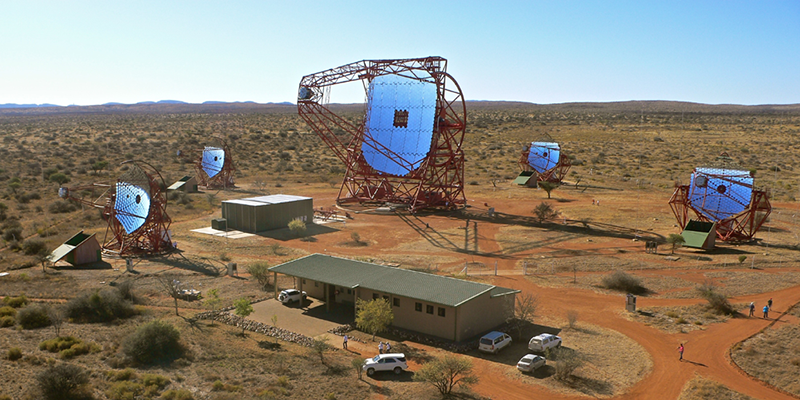Share This Article
Cosmic-ray electrons and positrons, though far fewer in number than cosmic-ray protons and other nuclei, provide essential insights into the high-energy processes taking place in our Galaxy. The High Energy Stereoscopic System (H.E.S.S.) Collaboration has made a significant breakthrough in this field with its highly detailed measurement of the cosmic-ray electron and positron spectrum, extending up to an impressive 40 TeV [1]. Previous measurements of this spectrum ended below 5 TeV [2, 3]. The H.E.S.S. team’s data, collected over 12 years, reveal unprecedented detail, especially around a distinct “break” at approximately 1 TeV where the spectral slope steepens. The results confirm that this break is among the most prominent and enigmatic features across the entire cosmic-ray spectrum, posing a challenge to our understanding of Galactic cosmic-ray origins. Additionally, the almost featureless power law detected beyond the break, sustained over a full order of magnitude in energy, places significant constraints on the role of local sources that contribute to the measured flux, as well as on alternative production mechanisms, such as the possible annihilation or decay of dark matter particles in the Milky Way. With these groundbreaking measurements, we now gain clearer insights into local cosmic-ray accelerators and on how high-energy particles propagate through the Galaxy.
Cosmic-ray electrons are high-energy particles that lose energy rapidly while traveling through the Galaxy, primarily because of interactions with Galactic magnetic fields and background radiation. This energy loss limits their range of propagation—especially at high energies—raising hopes of detecting signatures in the particle spectrum from nearby cosmic-ray accelerators. By identifying these local accelerators—most likely pulsars and supernova remnants—we may uncover the sources of cosmic rays. Another motivation for exploring the high-energy end of the spectrum lies in the potential to detect cosmic-ray electrons produced through exotic processes, such as dark matter annihilation, which may be more observable at higher energies where conventional astrophysical fluxes diminish.



